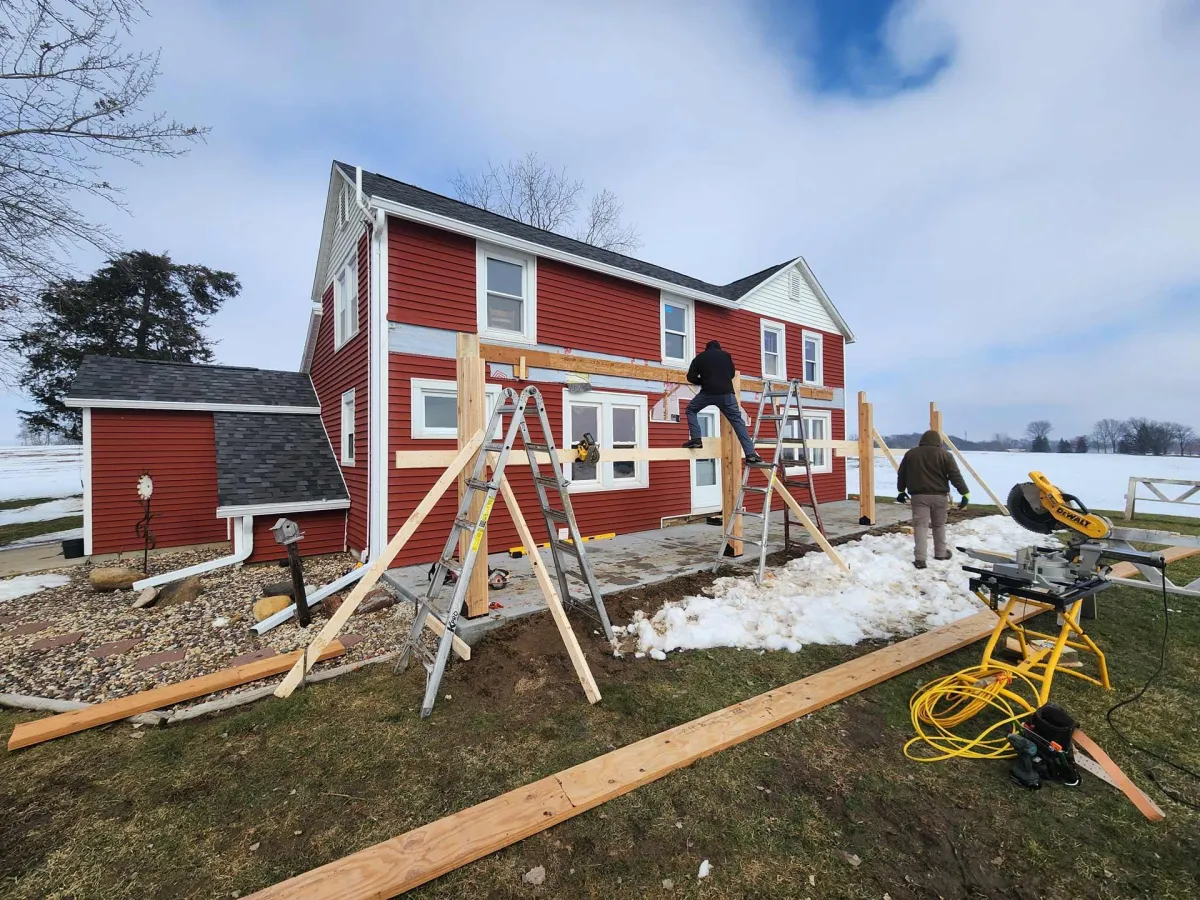
Key Considerations Before Replacing Windows and Doors in the Quad Cities
Replacing your home’s windows and doors is more than just a visual upgrade—it’s a long-term investment that affects comfort, energy bills, and property value. For homeowners in the Quad Cities, where winters can be harsh and summers humid, choosing the right materials and timing for your replacement project makes all the difference.
In this guide, we’ll walk through everything you need to consider before replacing your windows and doors—from material choices and energy efficiency to installation timing and contractor selection—so you can make the most of your renovation.
Understanding Window and Door Replacement
Before diving into the details, let’s clarify what a window and door replacement really involves.
Window replacement typically means removing old, drafty, or damaged windows and installing new ones designed for better insulation and performance.
Door replacement, on the other hand, focuses on improving both curb appeal and energy efficiency by upgrading entry, patio, or storm doors.
Why It Matters in the Quad Cities
The Midwest’s climate puts unique stress on homes. High humidity, fluctuating temperatures, and cold winds can cause materials to warp, crack, or lose their seal over time. Quality replacement helps:
Reduce heating and cooling costs
Prevent drafts and leaks
Improve indoor comfort year-round
Enhance security and noise reduction
Key Considerations Before Replacing Windows and Doors
1. Energy Efficiency Ratings
The most important factor for Quad Cities homeowners is energy efficiency. Look for:
Low-E Glass (Low Emissivity): Reflects heat in summer and retains warmth in winter.
ENERGY STAR® Certification: Meets federal energy-saving standards.
U-Factor: Lower values mean better insulation.
Solar Heat Gain Coefficient (SHGC): Lower numbers reduce heat from sunlight.
Tip: Choosing energy-efficient options can lower utility bills by 10–20% annually.
2. Material Choices
Each frame and door material has pros and cons based on your priorities and local weather.
3. Style and Functionality
Function matters as much as looks. Common window types include:
Double-hung: Easy to clean and great for airflow.
Casement: Hinged for full ventilation and tight seal.
Bay/Bow: Adds light and space to living areas.
Slider: Ideal for modern, minimalistic spaces.
For doors:
Fiberglass entry doors mimic wood but handle weather better.
Sliding patio doors save space while allowing natural light.
French doors add a classic touch and elegance.
Choose styles that complement your home’s design while supporting energy performance.
4. Timing the Project Right
Mild seasons—spring or fall—are the best times for replacement projects in the Quad Cities. The moderate weather allows for better caulking adhesion and more efficient installation. Avoid winter installs unless urgent, as freezing temperatures can affect material flexibility and sealant curing.
5. Professional Installation Quality
Even the best materials fail if installed poorly. Look for a licensed, insured local contractor with proven experience in window and door replacement. Professional installation ensures:
Proper sealing and weatherproofing
Accurate fit to avoid air leaks
Manufacturer warranty protection
Fowler Construction offers full-service installation handled by trained professionals familiar with Midwest building codes and local conditions.
6. Budgeting and Long-Term ROI
While initial costs vary, focus on total value instead of upfront savings. Energy-efficient windows and doors can recoup up to 70% of their cost through energy savings and increased home value.
Average cost ranges (Quad Cities estimates):
Windows: $600–$1,200 per unit installed
Doors: $1,000–$3,000 depending on type and finish
Financing or phased projects can help manage costs without sacrificing quality.
7. Maintenance and Longevity
Think beyond installation—maintenance matters.
Vinyl and fiberglass: Only need occasional cleaning.
Wood: Requires sealing or painting every few years.
Hardware: Check locks and hinges annually for corrosion.
Routine care extends product lifespan and keeps performance high.
Step-by-Step Decision Guide
Assess Current Condition – Check for drafts, condensation, or sticking frames.
Set a Budget – Include materials, labor, and disposal fees.
Compare Materials – Choose based on aesthetics, efficiency, and durability.
Get Professional Advice – Schedule an inspection or consultation.
Plan Your Timeline – Aim for spring or fall installation.
Hire a Trusted Contractor – Confirm credentials and local references.
Enjoy the Results – Improved comfort, lower bills, and better curb appeal.
FAQs
What’s the best time of year to replace windows in the Quad Cities?
Spring and fall offer ideal temperatures for sealing and installation without delays.How long does window replacement take?
Most residential projects finish within 1–3 days, depending on home size and number of units.Are energy-efficient windows worth it?
Absolutely. They can reduce heating and cooling costs and increase home resale value.Do I need to replace all windows at once?
Not necessarily—you can phase the project by priority or budget.What’s the difference between retrofit and full-frame replacement?
Retrofit fits new windows into existing frames; full-frame involves removing old frames for a complete replacement.
Conclusion
Upgrading your home’s windows and doors is one of the smartest improvements you can make—especially in the Quad Cities, where weather and energy costs are always factors. The right materials, installation, and timing ensure your investment pays off through comfort, efficiency, and long-term durability.
Whether you’re tackling a full renovation or replacing a few units, Fowler Construction delivers expert craftsmanship and honest guidance every step of the way.
📞 Call Fowler Construction today at (309) 945-5588 to schedule your consultation or request a free quote for your next home improvement project.